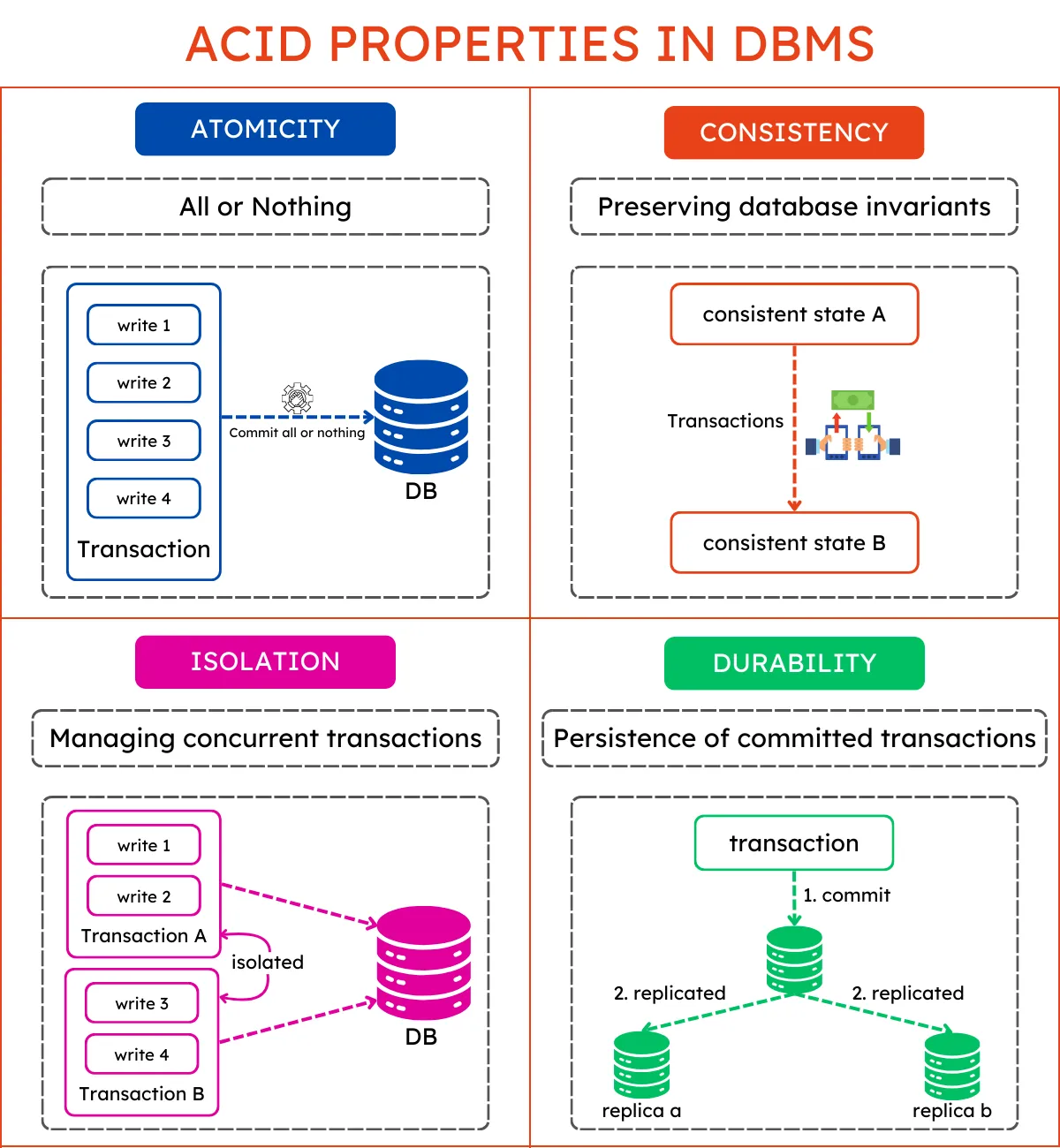If you’ve ever worked with databases, you’ve probably heard of ACID — the four fundamental properties that ensure your transactions remain reliable, even in the face of errors or crashes.
In this post, we’ll break down Atomicity, Consistency, Isolation, and Durability, showing how each one keeps your data safe and sound.
Table of contents
Open Table of contents
Atomicity in Databases: Ensuring All or Nothing
Think of a transaction as an indivisible unit—like an atom.
- What it means: Either the entire transaction completes successfully, or none of it happens.
- Example: In a banking app, transferring $100 from Alice to Bob involves two steps: subtracting $100 from Alice and adding $100 to Bob.
- If one step fails, the system rolls back the entire transaction, ensuring no partial changes are saved.
- How it works: Transaction management systems use logging to undo partial changes if something goes wrong.
Consistency in Databases: Maintaining Integrity
Your database should always remain valid, adhering to predefined constraints and rules.
- What it means: Transactions can’t leave the database in an invalid state.
- Example: If user account balances can’t go negative, a transaction that attempts to overdraw will be canceled automatically.
- How it works: The database enforces consistency by checking for rule violations before committing a transaction.
Isolation Levels in Databases: Preventing Interference
Even when multiple transactions run simultaneously, they shouldn’t interfere with each other.
- What it means: Each transaction behaves as if it’s the only one interacting with the database.
- Levels of Isolation:
- Serializable: Transactions execute one at a time, ensuring the strongest consistency but reducing speed.
- Read Committed: Prevents dirty reads (reading uncommitted changes) but allows non-repeatable reads (data changes between reads).
- Repeatable Read: Prevents non-repeatable reads but may still allow phantom reads (new rows appearing in a query result).
- Trade-offs: Lower isolation levels boost performance but may allow inconsistencies like dirty reads or phantom reads. Choose the level that best balances speed and reliability for your application.
Durability in Databases: Ensuring Permanent Changes
Once a transaction is committed, it’s permanent—even in the event of a crash or power loss.
- What it means: Your data is safe and will persist no matter what.
- How it works:
- Databases use techniques like Write-Ahead Logging (WAL) to ensure changes are saved to disk before confirming a commit.
- In distributed systems, durability involves replicating data across nodes so it’s never lost, even if one node fails.

Quick Recap
- Atomicity: Roll back incomplete transactions.
- Consistency: Maintain database integrity.
- Isolation: Avoid interference between transactions.
- Durability: Commit changes permanently.
Understanding and applying these ACID principles can elevate the reliability of your database systems, ensuring your data stays consistent and safe under all circumstances.